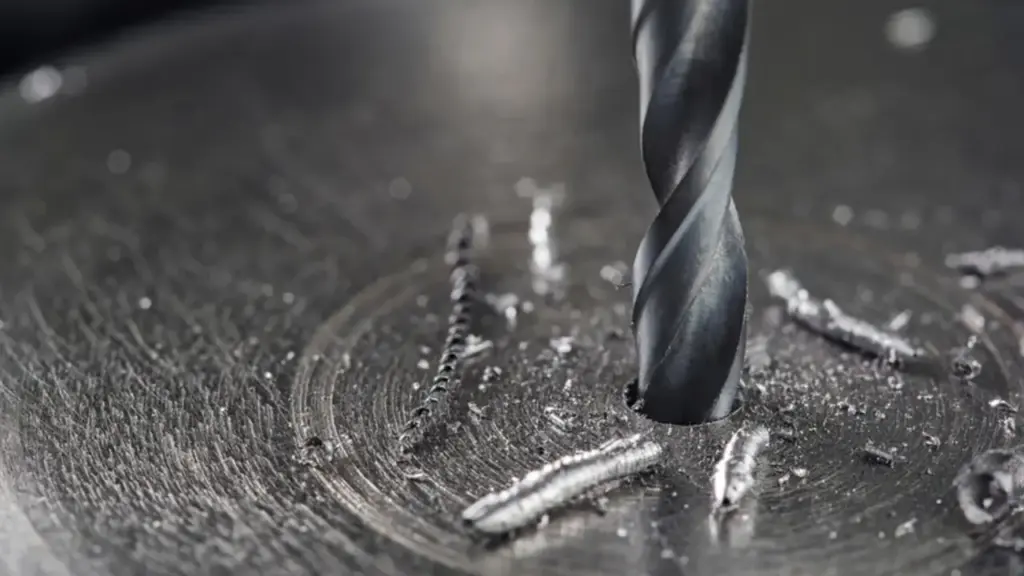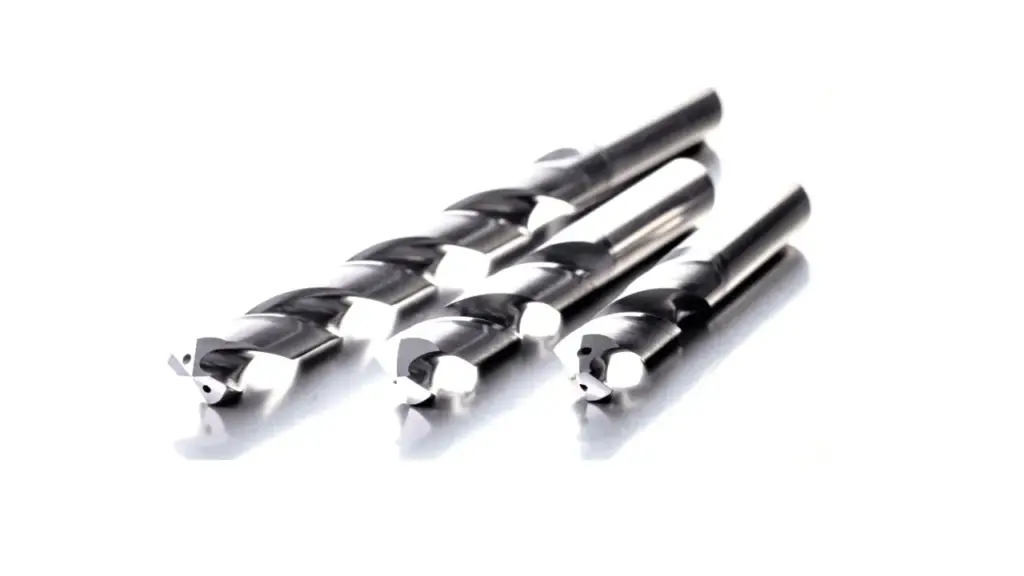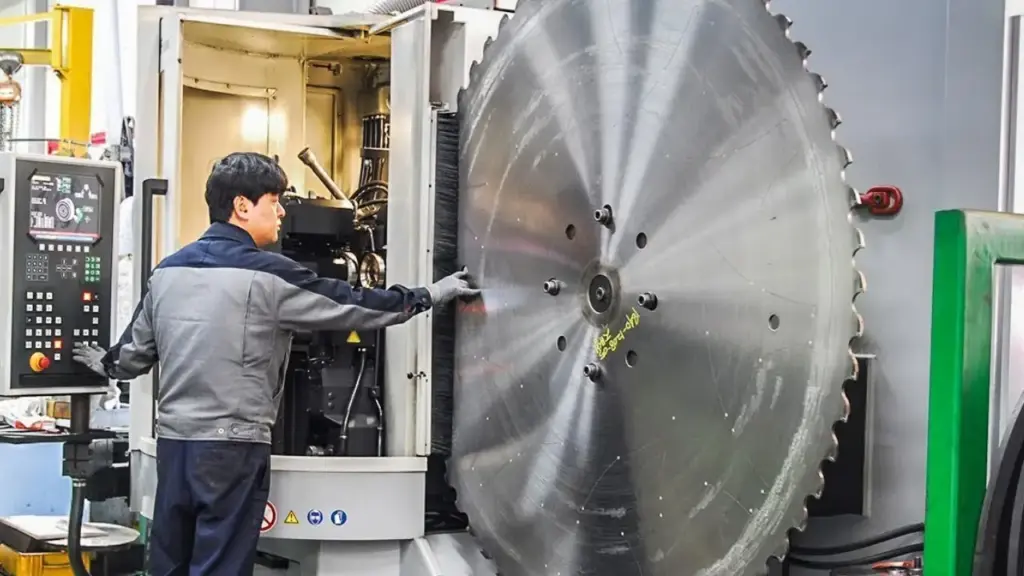Welcome to our deep dive into the fascinating world of drill bits! Have you ever wondered what gives these seemingly simple tools the power to bore through tough materials? The secret lies in their composition. Drill bits are crafted from a variety of materials, each selected for its unique properties that cater to specific drilling tasks.
From the common high-speed steel found in everyday bits to the ultra-hard carbide used for demanding applications, the material makeup of a drill bit significantly impacts its performance, durability, and the types of materials it can effectively penetrate. Join us as we explore the key materials that form these essential dril bit tools.
What Are Drill Bits

Drill bits are specialized cutting tools designed to create cylindrical holes in various materials. When attached to a drill, their rotary motion and applied pressure allow them to bore through substances like wood, metal, plastic, masonry, and more.
These drill bit tools come in a wide spectrum of designs, sizes, and materials, each engineered to optimize performance and efficiency for specific drilling tasks and material types, ensuring clean and accurate hole creation.
What Are Drill Bits Made Of?

Ever wondered about the secret behind a drill bit’s ability to bore through tough materials? The answer lies in the carefully selected materials they’re made from. These materials dictate the bit’s hardness, resistance to heat and wear, and ultimately, the types of materials it can effectively drill.
Let’s delve into the fascinating world of drill bit composition and explore the key materials that give these tools their cutting power.
Steel-Based Materials for Drill Bits

Steel alloys form the foundation for many types of drill bits, offering a balance of strength and affordability for a wide range of applications. The specific type of steel used significantly influences the bit’s performance and longevity.
Carbon Steel
Carbon steel drill bits are made from high-carbon steel that has been heat-treated to increase its hardness. These bits are generally less expensive and are suitable for drilling softer materials like wood, plastic, and occasionally soft metals.
However, they tend to lose their sharpness relatively quickly and are not ideal for drilling harder metals due to their lower heat resistance. They are a budget-friendly option for light-duty tasks but may require more frequent sharpening or replacement in demanding applications.
High-Speed Steel (HSS)
High-Speed Steel (HSS) drill bits represent a significant upgrade from carbon steel. HSS is an alloy steel that retains its hardness at much higher temperatures, making it suitable for drilling wood, plastic, and most metals, including aluminum, copper, and mild steel.
The ability to withstand higher temperatures generated during drilling allows HSS bits to maintain their cutting edge for longer periods compared to carbon steel bits. They are a versatile and widely used option for both general-purpose and more demanding drilling tasks.
Cobalt Steel
Cobalt steel drill bits are a type of HSS with the addition of cobalt. This alloy offers even greater heat resistance and hardness compared to standard HSS bits. Cobalt steel bits excel at drilling hard and abrasive materials such as stainless steel, cast iron, and titanium alloys.
Their superior heat resistance allows them to be used at higher speeds without losing their temper, resulting in longer tool life and improved performance in challenging drilling applications. While more expensive than HSS bits, their durability and effectiveness in demanding situations often make them a worthwhile investment.
Carbide Materials for Drill Bits

Carbide is an exceptionally hard and wear-resistant ceramic composite material composed of tungsten carbide particles bonded together by a metal binder, typically cobalt or nickel. Drill bits made with carbide offer superior performance when drilling very hard and abrasive materials.
Carbide-Tipped Bits
Carbide-tipped drill bits feature a steel body with small pieces of carbide brazed or otherwise attached to the cutting edges. This design provides the hardness and wear resistance of carbide at the critical cutting points while maintaining a more economical overall bit construction.
Carbide-tipped bits are commonly used for drilling masonry, tile, concrete, and other hard, brittle materials. The carbide tips can withstand the impact and abrasion associated with drilling these materials, offering significantly longer life compared to steel bits in such applications.
Solid Carbide Bits
Solid carbide drill bits are made entirely from carbide. While more expensive than carbide-tipped bits, they offer the ultimate in hardness, wear resistance, and heat resistance. Solid carbide bits are ideal for high-performance drilling in very hard materials, including hardened steels, exotic alloys, and composites. Their rigidity and ability to maintain a sharp cutting edge at high temperatures make them essential tools in precision machining and manufacturing environments where demanding tolerances and material properties are involved.
| Material | Hardness | Heat Resistance | Wear Resistance | Common Applications | Cost |
| Carbon Steel | Low | Low | Low | Wood, Plastic, Soft Metals (light duty) | Very Low |
| High-Speed Steel | Medium | Medium | Medium | Wood, Plastic, Most Metals (general purpose) | Low to Medium |
| Cobalt Steel | High | High | High | Hard Metals (Stainless Steel, Cast Iron, Titanium) | Medium to High |
| Carbide-Tipped | Very High | High | Very High | Masonry, Tile, Concrete | Medium |
| Solid Carbide | Very High | Very High | Very High | Hardened Steels, Exotic Alloys, Composites | High |
Best Drill Bit Material for Metal
When it comes to drilling metal, the choice of drill bit material significantly impacts the efficiency, precision, and longevity of the bit. While various materials are used, a few stand out as the top contenders for metalworking applications due to their superior hardness and heat resistance.
- Cobalt Steel: Often considered one of the best choices for drilling metal, especially harder varieties like stainless steel and cast iron. The addition of cobalt to high-speed steel (HSS) enhances its heat resistance, allowing it to maintain its hardness at higher temperatures generated during metal drilling. Cobalt bits are also known for their excellent wear resistance, making them a durable option for demanding metalworking tasks.
- Carbide: For drilling extremely hard metals and abrasive materials, carbide drill bits are often the preferred choice. Carbide is significantly harder than steel and can withstand very high temperatures. Carbide-tipped bits offer a cost-effective solution for drilling hard metals, while solid carbide bits provide the ultimate in hardness and durability for professional and industrial applications.
While titanium-coated HSS bits offer increased hardness and corrosion resistance compared to standard HSS bits and are suitable for drilling softer metals like aluminum and copper, cobalt and carbide generally provide superior performance when working with tougher metals.
Best Drill Bit Material for Stainless Steel
For drilling stainless steel, a material known for its hardness and tendency to work-harden, selecting the right drill bit material is critical for success. Bits made from materials with exceptional heat and wear resistance are necessary to effectively penetrate this tough alloy.
- Cobalt Steel: Often cited as the best overall choice for drilling stainless steel. Cobalt drill bits are made from high-speed steel (HSS) with an added percentage of cobalt, typically between 5% and 8%. This addition significantly increases the bit’s heat resistance, allowing it to maintain its hardness at the high temperatures generated when drilling stainless steel. Their superior hardness also contributes to excellent wear resistance and a longer lifespan when used on this challenging material.
- Carbide: For demanding applications and when drilling very hard grades of stainless steel, carbide drill bits provide the ultimate performance. Carbide is an extremely hard material that can withstand significantly higher temperatures than even cobalt steel. Carbide-tipped bits offer a cost-effective way to gain some of these benefits, while solid carbide bits provide maximum hardness and durability for industrial and professional use. The rigidity of carbide also helps in maintaining precise hole dimensions in stainless steel.
What Type of Drill Bits Material Won’t Snap
While no drill bit material is entirely immune to snapping under extreme stress or misuse, certain materials offer significantly higher toughness and resistance to fracture compared to others. These materials are better equipped to withstand bending forces and sudden impacts that can cause less robust bits to break.
- High-Speed Steel (HSS): Good quality HSS drill bits, especially those with added alloys like molybdenum or vanadium, offer a good balance of hardness and toughness. While they can break under excessive force or bending, they are generally more forgiving than harder, more brittle materials like carbide. Investing in reputable brands of HSS bits can significantly reduce the likelihood of snapping during general-purpose drilling.
- Cobalt Steel: As an alloy of HSS, cobalt steel drill bits offer increased heat resistance and hardness, but they also tend to be slightly more brittle than standard HSS. While excellent for drilling hard metals, they can be more prone to snapping if subjected to significant lateral forces or used improperly. However, they still generally offer better resistance to snapping than materials like carbide in many hand-drilling scenarios.
How Are Drill Bits Made

The creation of a drill bit is a fascinating process that combines precision engineering with advanced material science. From raw material to the final, sharp cutting tool, each step is carefully controlled to ensure the bit meets the required specifications for size, shape, and performance.
Let’s take a closer look at the intricate drill bit manufacturing process in the following.
Material Preparation
The journey begins with the selection and preparation of the raw material. For steel-based drill bits, this typically involves high-speed steel (HSS) or carbon steel in the form of bars or rods. These materials are chosen based on the desired properties of the final drill bit. The steel is often pre-processed through processes like hot rolling or cold drawing to achieve the required dimensions and improve its internal structure before further shaping. For carbide bits, tungsten carbide powder is mixed with a binder material, such as cobalt, and then pressed into a near-net shape.
Shaping the Flutes and Body
The next crucial step involves shaping the body and creating the helical flutes that are characteristic of many drill bit types, particularly twist bits. This is often achieved through processes like milling or grinding. In milling, a rotating cutting tool removes material from the steel bar to form the flutes and the overall shape of the bit. Grinding uses abrasive wheels to achieve the precise geometry of the flutes and the body. For carbide blanks, more specialized grinding techniques are employed to shape the hard material accurately.
Creating the Cutting Edges and Point
The creation of the sharp cutting edges and the point of the drill bit is paramount for its drilling performance. This critical step typically involves precision grinding. Specialized grinding machines use carefully shaped abrasive wheels to create the precise angles and relief necessary for efficient cutting. The geometry of the point, such as the point angle and lip relief angle, is crucial and varies depending on the intended material the bit will drill. For carbide-tipped bits, the pre-formed carbide tips are brazed or otherwise securely attached to the steel body before the final grinding of the cutting edges.
Heat Treatment (for Steel Bits)
For steel-based drill bits, heat treatment is a vital step to achieve the desired hardness and toughness. This process involves heating the steel to a specific temperature and then rapidly cooling it (quenching), followed by a tempering process where the steel is reheated to a lower temperature and then cooled slowly. This controlled heating and cooling cycle alters the microstructure of the steel, significantly increasing its hardness and wear resistance while reducing brittleness.
Surface Finishing and Coating
The final stages of drill bit manufacturing often involve surface finishing and the application of coatings. Surface finishing processes, such as polishing or blasting, can improve the bit’s surface quality and reduce friction. Coatings, such as black oxide, titanium nitride (TiN), or titanium aluminum nitride (TiAlN), are often applied to enhance corrosion resistance, increase surface hardness, reduce friction, and extend the life of the drill bit. These coatings are typically applied using processes like physical vapor deposition (PVD) or chemical vapor deposition (CVD).
Quality Control and Inspection
Throughout the manufacturing process, rigorous quality control measures are implemented. This includes dimensional checks, inspections for surface defects, and testing of hardness and cutting performance. These checks ensure that the final drill bit meets the required standards and will perform reliably in its intended applications. Only after passing these stringent quality checks are the drill bits ready for packaging and distribution.
How to Choose Suitable Drill Bit Materials
Selecting the appropriate drill bit material is crucial for efficient and effective drilling, preventing damage to both the workpiece and the tool. The material’s hardness, toughness, heat resistance, and wear resistance should align with the specific application and the material being drilled. Consider the following factors:
- Material of the workpiece: Harder materials like stainless steel, titanium, or hardened steel require bits made from harder materials such as cobalt steel or carbide. Softer materials like wood, plastic, or aluminum can be drilled with high-speed steel (HSS) bits.
- Drilling conditions: High-speed, high-pressure drilling generates more heat, necessitating bits with excellent heat resistance. Cobalt steel and carbide are well-suited for these conditions. For applications where toughness is paramount to prevent breakage, HSS bits might be preferred.
- Cost and longevity: HSS bits are generally the most cost-effective for general-purpose drilling. Cobalt steel offers increased performance and longevity but comes at a higher price. Carbide bits are the most expensive but provide the highest hardness and wear resistance, making them suitable for demanding industrial applications and very hard materials.
Conclusion
Drill bits are crafted from a range of materials, each offering distinct characteristics tailored for specific drilling tasks. From basic carbon steel for soft materials to robust carbide for the toughest applications, the choice of material significantly impacts the bit’s durability, heat resistance, and cutting efficiency. Understanding these material properties is crucial for selecting the optimal bit for any job.
Various coatings are applied to enhance drill bit performance. These coatings, such as titanium nitride and black oxide, improve hardness, reduce friction, and increase resistance to wear and corrosion, ultimately extending the life of the tool. The combination of the core material and any applied coating determines the overall capability and suitability of a drill bit for different drilling scenarios.
For businesses seeking a reliable source of drill bits for bulk purchase, Sinodrills offers a comprehensive selection. Explore Sinodrills’ drill bit catalog today to find a wide variety of durable and efficient drill bits at wholesale prices to meet your industrial and commercial needs.


